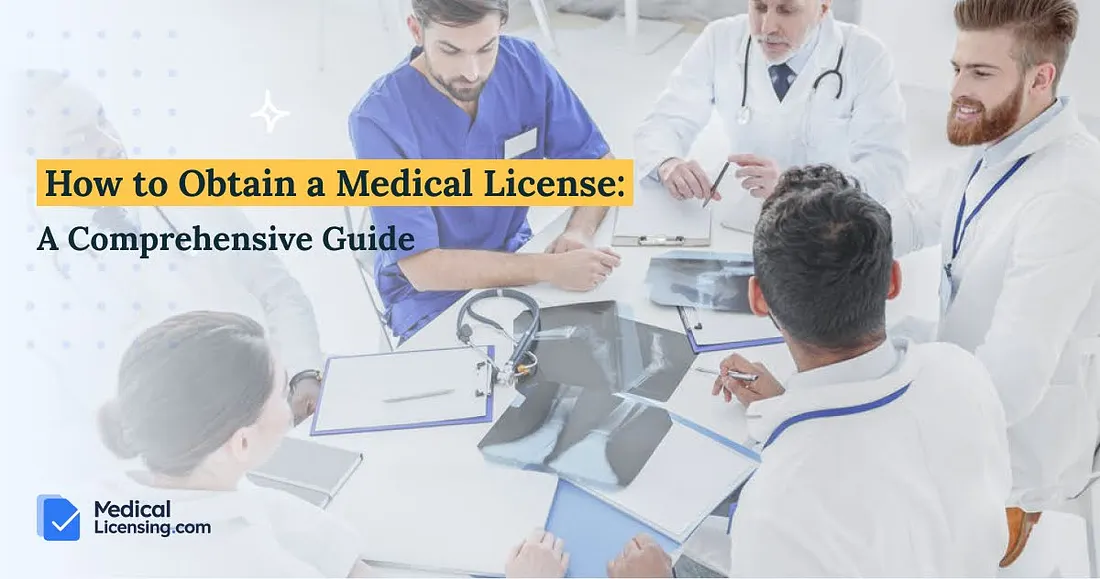
Understanding the Importance of a Medical License
A medical license is more than just a piece of paper; it is a legal requirement for practicing medicine and a symbol of trust, competency, and professional ethics. Obtaining a medical license involves a rigorous process that ensures all practicing physicians meet the required standards of education, training, and ethical behavior. For detailed information on navigating the licensing process, you can visit Medical Licensing.
The Path to a Medical License
Educational Requirements
The journey to obtaining a medical license begins with a solid educational foundation. Aspiring doctors must first complete a Bachelor’s degree, often with a focus on pre-medical courses such as biology, chemistry, and physics. Following this, they must gain admission to a medical school accredited by the Liaison Committee on Medical Education (LCME) or the American Osteopathic Association (AOA).
Medical School Training
Medical school typically lasts four years, divided into two phases:
1. Pre-clinical Phase: The first two years focus on classroom and laboratory instruction in subjects like anatomy, biochemistry, pharmacology, and pathology.
2. Clinical Phase: The final two years involve clinical rotations in various medical specialties, providing hands-on experience under the supervision of experienced physicians.
Residency Training
After graduating from medical school, the next step is to enter a residency program. Residency training is a crucial phase where new doctors receive specialized training in their chosen field of medicine. Residency programs can last from three to seven years, depending on the specialty. During this period, residents work in hospitals and clinics, gaining practical experience and honing their skills.
Board Examinations
To obtain a medical license, candidates must pass a series of board examinations. These exams are designed to test their knowledge, skills, and competency in medical practice. In the United States, there are two primary types of licensing exams:
1. United States Medical Licensing Examination (USMLE): For allopathic physicians (MDs).
2. Comprehensive Osteopathic Medical Licensing Examination (COMLEX-USA): For osteopathic physicians (DOs).
Both exams are divided into three parts:
* Step 1/Level 1: Tests basic medical sciences knowledge.
* Step 2/Level 2: Assesses clinical knowledge and skills.
* Step 3/Level 3: Evaluates the ability to practice medicine independently.
State Licensure
Once all educational and examination requirements are fulfilled, the next step is to apply for a state medical license. Each state in the U.S. has its own medical board that oversees the licensure process. Applicants must submit detailed documentation, including proof of education, exam scores, and residency training. Some states may also require background checks and additional exams.
Maintaining Your Medical License
Obtaining a medical license is not a one-time achievement. Physicians must adhere to ongoing requirements to maintain their licensure. This includes:
Continuing Medical Education (CME)
Physicians are required to complete Continuing Medical Education (CME) credits regularly. CME helps doctors stay updated with the latest advancements in medical science and improve their skills. The number of required CME credits varies by state.
Renewal Process
Medical licenses must be renewed periodically, usually every one to three years. The renewal process often involves submitting proof of CME credits, paying a renewal fee, and sometimes undergoing additional training or examinations.
Ethical and Professional Conduct
Maintaining a medical license also requires adherence to high standards of ethical and professional conduct. Medical boards can revoke or suspend licenses for violations such as malpractice, substance abuse, criminal behavior, or unethical practices.
Challenges in the Licensing Process
Financial Burden
The cost of obtaining a medical license can be substantial. From undergraduate education to medical school tuition, residency training, and examination fees, the financial burden is significant. Many medical students graduate with considerable debt.
Time-Consuming Process
The entire process, from starting undergraduate education to obtaining a license, can take over a decade. This lengthy period requires dedication, perseverance, and resilience.
Geographic Mobility
Doctors who wish to practice in multiple states must navigate the complexities of obtaining licenses in each state. This can involve meeting different state-specific requirements and passing additional exams.
International Medical Graduates (IMGs)
Special Considerations
International Medical Graduates (IMGs) face additional challenges when seeking licensure in the U.S. IMGs must have their credentials evaluated by the Educational Commission for Foreign Medical Graduates (ECFMG) and pass the USMLE. They may also need to complete a U.S. residency program, even if they have already completed one abroad.
Streamlining the Licensing Process
Efforts are being made to streamline the medical licensing process. Initiatives like the Interstate Medical Licensure Compact (IMLC) facilitate the process for physicians to obtain licenses in multiple states. The IMLC allows eligible physicians to apply for licensure in member states through a simplified and expedited process.
Conclusion
The process of obtaining a medical license is comprehensive and demanding, ensuring that only qualified and competent individuals are authorized to practice medicine. From extensive education and rigorous examinations to maintaining high standards of professional conduct, the journey to licensure is a testament to a physician’s commitment to providing quality healthcare.
For more detailed guidance on navigating the licensing process, Medical Licensing offers valuable insights and assistance.


